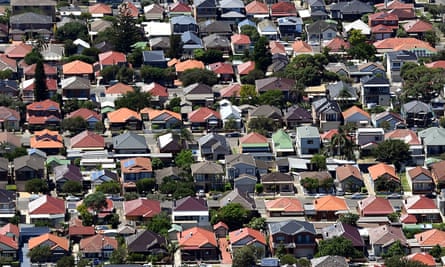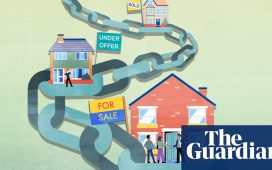Last year renters endured the fastest price growth on record, with the nation’s median rent rising 10.2% to $555 a week, according to a recent report from property analysts CoreLogic.
CoreLogic has been tracking the property market since 2006, and executive research director Tim Lawless said they had never seen rents rise so quickly.
“It’s unprecedented,” Lawless said.
“When you look at rental markets they don’t show the volatility that housing values show. Housing tends to move through distinct cycles of highs and lows while rents show gradual increases … they rise with inflation or income growth, but not at the moment.”
Vacancy rates across the country are at near-record lows, with a small lift to 1.17% in December, after a low of 1.05% the previous month.
“If you wanted to drill down a little bit, you can start to see the strongest rental conditions are skewed towards unit markets in Sydney, where net rents are up 15.5%, Brisbane, up 15% and Melbourne, up 14.2%,” Lawless said.
And while there are signs rents have started to ebb slightly in line with slightly higher vacancy rates and tenants hitting their limits, most pundits predict rents to stay high for a while.
So how did we get here?
Race for space
At the centre of this is a high level of demand and lower supply. Between the 2016 and 2021 censuses nearly one million new households were formed, according to the Australian Housing and Urban Research Institute.
A key reason for this was a large rise (17.1%) in the number of single-person households, driven by people shunning share houses in the pandemic and relationship breakdowns. In comparison, this was only a 7.1% increase in the previous census.
The number of new dwellings coming on to the market has failed to keep up with demand, increasing by only 10.6%, which is around 198,000 each year.
Senior associate in Grattan Institute’s Economic Policy program Joey Moloney said it’s become known as “the race for space”.
“One of the things that happened when everyone was locked down was, everyone decided they wanted more space to themselves. That was fine in the pandemic because the population stopped growing” Moloney said.

The latest ABS figures show that in the year ending 30 June 2022, overseas migration contributed a net gain of 171,000 to Australia’s population and has only risen since.
“More people represent more demand, and it’s causing an acute phase at the moment while we have this shift in preferences to smaller household sizes,” Moloney said.
“If that hadn’t happened I’m confident the rental market could have absorbed the population a lot better.”
New builds have slowed
Since 2018 the number of approved apartments has been dwindling, and global supply constraints have slowed new builds, Moloney said.
“In a normal state of affairs, it can take eight to nine months to build a house, right now because of the difficulty, that has blown out to 14 months,” he said.
Added to this is regulation pressure – which is driven by a “not in my back yard” mentality, with local councils making it hard to build medium to high-density dwellings in many capital cities, Moloney said.
“That’s fundamentally why Melbourne and Sydney are globally sprawled cities. We have the lowest density in the developed world.”
Interest rates
Property owners say cost pressures, including interest rates, are forcing them to raise rents.
Strategic buyers agent and vice-president of the Property Owners Association of New South Wales Debra Beck-Mewing said supply was the biggest factor, but the increased costs for investors were bumping rents up.
“Part of it is because a lot of apartment rents were dropped during the pandemic, so part of the jump is because of rents returning to almost what they were pre-Covid.”
“The other part is the increase in expenses that investors have. The interest rates, the other expenses like maintaining the property, council and state taxes.”
Less social housing
Since the 90s the number of social housing stock has effectively stagnated, while the application list has continued to grow.
Research conducted last year by professor of housing research and policy at UNSW Hal Pawson showed while the national population was 41% higher than in 1996, the amount of social housing had grown by just 3% – meaning social housing stock was effectively cut by more than half since the 1990s.
The national spokesperson for Everybody’s Home, Maiy Azize, said Australia’s massive shortfall in social and affordable housing was a key factor in driving high rental prices.
“Australia is building 160,000 to 220,000 homes through the private sector each year and it’s not making the market more affordable. It’s not trickling down,’ ” Azize said.
To combat this, Australia needs to build 500,000 new social and low-cost rentals over the next 20 years, hitting a rate of at least 25,000 new builds each year, housing advocates warn.
“If you want the market to become more affordable you need to create more affordable housing … and there’s a shortfall of 500,000 social homes across the country,” Azize said.
“It means the private sector is driving the market and landlords are changing what the market will bear.”











